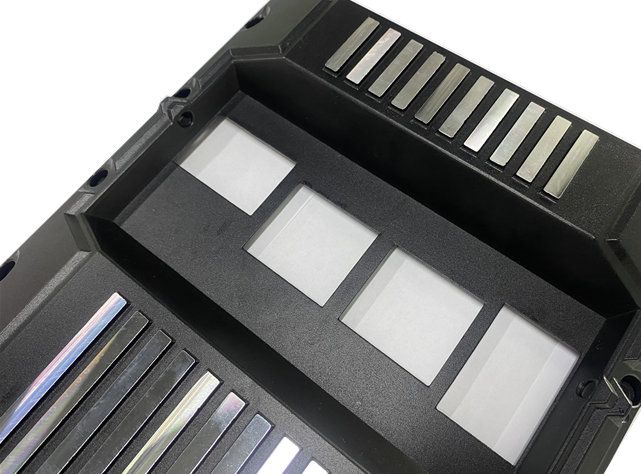Die casting surface treatments are operations that lead to obtain a finished product starting from the casting aiming at increasing aesthetical and functional characteristics of a product or component. Can be either production cycle last phase or a step, where component surface is prepared for other following treatments.
Furthermore die casting surface treatments can be applied for many reasons: to improve aesthetic side of a product, to improve chemical resistance, corrosion resistance, wear resistance, remove burrs and flaws and modify electrical conductivity. Product quality, both technical and aesthetic side, depend on the type of surface treatment.

Die casting surface treatments
Depending on requested surface treatments components will have a particular die casting and preparation processes.
In fact, as said before regarding the process, die casting surface treatments can be divided into two different categories: the first one regards only external agents resistance, chemical improvement and physical characteristics; the second one has an aesthetic function. However in both cases the process is obtained among the deposit of a layer of a different material on product surface.
The process and layer thickness depends on the type of die casting surface treatment.
There are different types of deposition process for both categories:
Before applying a die casting surface treatment, is important to prepare product surface because many surface treatments do not cover imperfections or defects caused by die casting process but very often they emphasize them.
In fact for this reason is fundamental to avoid, in particular for aesthetic components, during die casting, defects such as air entrapments, surface porosity, lacks of material and to prepare their surface before the treatment.
These issues can be avoided only if, beforehand, there have been a collaboration between client and supplier in order to obtain a functional product or component consistent with aesthetic requirements. This could be a co-design service which allows suppliers to get involved in the process since very beginning.
Now we are going to deeply analyze the second category of die casting surface treatments: preparing components for following treatments.
Which are the most important preparation techniques?
Preparation phase is applied in order to prepare product or component for secondary die casting surface treatments. They can have different functions: for example cut waste of material, deburring, smooth and polish it.
There are different techniques to prepare components for surface treatments. Hereunder are explained the most common ones:
Besides, apart from the finishing itself, is really important to choose the right zinc die casting productive cycle linked to surface treatments. If preparation phase is not suitable for productive cycle the outcome of the product will not reach the aesthetical and technical requirements, even with a good die casting. Otherwise choosing the correct productive cycle allows die caster to reach high quality levels even in mass production.
Why is zinc the most suitable material to get requirements in surface treatments terms?
Using zinc, in die casting process, many surface treatments and aesthetic and chemical characteristics of a product are improved. In fact with zinc is possible to choose the type of melting and preparation process related to finishing; this should be done building a collaboration with suppliers, who can suggest the best way to proceed.
If compared to other materials zinc is a strong, durable and dense material and allows more types of die casting surface treatments. This can be considered as an important advantage for functional and aesthetic reasons: from product design to surface improvements.
For reasons above mentioned zinc can be considered the best choice in order to achieve clients’ requirements.
 Contact Us
Contact Us Address : No.103, Tong’an Park, Tong’an Industry Zone, Xiamen, China
Address : No.103, Tong’an Park, Tong’an Industry Zone, Xiamen, China WhatsApp : +86 18259211580
WhatsApp : +86 18259211580 Email : roger@ppl2009.com
Email : roger@ppl2009.com IPv6 network supported
IPv6 network supported




